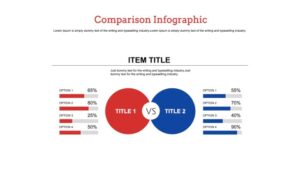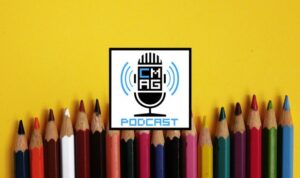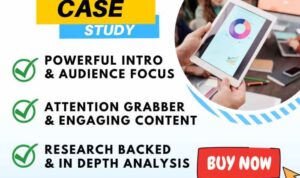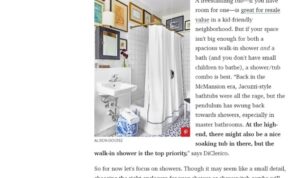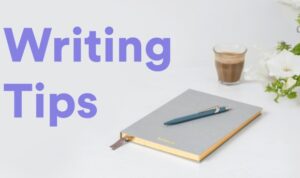Writing Effective Headlines sets the stage for captivating content that grabs attention and boosts engagement. Dive into the art of creating headlines that resonate with your audience and drive results.
Explore the key elements that make headlines effective, the various types of headlines to choose from, essential writing strategies, and tools to analyze headline performance for optimal outcomes.
Importance of Writing Effective Headlines

Headlines play a critical role in capturing the attention of readers and enticing them to engage with the content. A well-crafted headline can make the difference between someone clicking on an article or scrolling past it.
Grabbing Readers’ Attention
Effective headlines are essential for grabbing readers’ attention in today’s fast-paced digital world. With an abundance of content available online, a compelling headline is the first impression a reader gets of an article.
- Headlines that are clear, concise, and intriguing are more likely to attract readers.
- Using strong words, numbers, and questions can pique curiosity and encourage clicks.
- A well-written headline sets the tone for the rest of the content and can draw readers in to learn more.
Influencing Click-Through Rates
The impact of headlines on click-through rates cannot be overstated. A catchy headline can significantly increase the chances of a reader clicking on a link to read the full article.
- Studies have shown that headlines with emotional appeal or a sense of urgency tend to perform better in terms of click-through rates.
- Experimenting with different headline formats and styles can help determine what resonates best with the target audience.
- A/B testing headlines can provide valuable insights into which ones are most effective in driving traffic.
Improving
Headlines also play a crucial role in improving search engine optimization () for content. A well-optimized headline with relevant s can help increase visibility and ranking in search engine results.
- Using s strategically in headlines can signal to search engines what the content is about and improve its chances of being found by users searching for related topics.
- Headlines that accurately reflect the content of the article can lead to higher click-through rates and lower bounce rates, which are positive signals for search engines.
- Creating unique and compelling headlines can differentiate content from competitors and attract organic traffic through search engine results.
Characteristics of Effective Headlines
Effective headlines are crucial for grabbing the attention of readers and enticing them to click on the content. Some key elements that make a headline effective include:
1. Clear and Concise
Headlines that are clear and to the point are more likely to attract readers. Avoid jargon or complex language that may confuse the audience.
2. Relevant and Specific
Headlines should accurately reflect the content of the article or piece they are representing. Specific details or s can help in making the headline more appealing.
3. Intriguing and Compelling
Attention-grabbing headlines often use curiosity or emotion to entice readers to click. They can pose a question, create suspense, or evoke strong emotions.
4. Action-Oriented
Headlines that include action verbs or phrases can drive engagement by encouraging readers to take a specific action, such as reading, clicking, or sharing.
5. Optimal Length and Formatting
The optimal length for a headline is typically around 6-8 words, as shorter headlines tend to perform better. Additionally, using formatting such as capitalization, numbers, or symbols can make headlines more visually appealing and impactful.
Examples of attention-grabbing headlines:
– “Discover the Secret to Perfecting Your Morning Routine”
– “5 Simple Steps to Boost Your Productivity Today”
– “Why You Should Start Investing in Yourself Right Now”
By incorporating these characteristics into your headlines, you can increase the likelihood of capturing the interest of your audience and driving engagement with your content.
Types of Headlines: Writing Effective Headlines
When it comes to creating effective headlines, it’s important to consider the different types of headlines that can grab the reader’s attention and entice them to click on your content. Each type of headline has its own unique characteristics and works best in different contexts. Let’s explore some of the most common types of headlines and how to choose the right one for your content.
Listicles
Listicles are headlines that promise a list of items or tips within the content. They are popular because they offer a quick and easy way for readers to consume information. Listicles can be effective in drawing in readers who are looking for specific tips or recommendations. When choosing a listicle headline, make sure to highlight the number of items in the list and use engaging language to pique the reader’s curiosity.
- Use numbers in the headline to indicate the list format (e.g. “10 Ways to Boost Your Productivity”).
- Include powerful adjectives or action verbs to make the list items more compelling.
- Ensure that each item in the list provides valuable and actionable information for the reader.
How-tos
How-to headlines are instructional in nature and promise to teach the reader how to do something. These headlines are effective in attracting readers who are seeking guidance or looking to learn a new skill. When crafting a how-to headline, be clear and specific about what the reader will learn and use actionable language to encourage clicks.
- Start the headline with “How to” to clearly convey the instructional nature of the content.
- Focus on a specific topic or skill that the reader can learn from the content.
- Use strong verbs that indicate action and convey the benefit of reading the content (e.g. “How to Master the Art of Public Speaking”).
Questions
Headlines that pose a question to the reader can be effective in sparking curiosity and encouraging engagement. Questions can prompt the reader to think about the topic and compel them to click on the content to find the answer. When using a question headline, make sure the question is relevant to the content and aligns with the reader’s interests.
- Choose a question that is thought-provoking and relevant to the reader’s needs or interests.
- Avoid yes or no questions and instead ask open-ended questions that encourage exploration.
- Ensure that the content provides a satisfying answer to the question posed in the headline.
Writing Strategies for Compelling Headlines
Creating headlines that evoke curiosity is essential for grabbing the reader’s attention. One technique is to pose a question in the headline, making the reader want to know the answer. Another strategy is to use numbers or statistics to make the headline more specific and intriguing.
Using Power Words in Headlines
Power words are impactful and emotional words that can make your headlines more compelling. Words like “amazing,” “unbelievable,” “essential,” and “secret” can pique the reader’s interest and make them more likely to click on your content. Incorporating power words strategically can make your headlines stand out and attract more readers.
- Use words that evoke emotion: Incorporate words that trigger emotions like joy, fear, surprise, or curiosity to engage the reader on a deeper level.
- Highlight benefits: Focus on the benefits or solutions your content offers, using words like “easy,” “effective,” “proven,” or “guaranteed” to emphasize value.
- Create urgency: Use words like “now,” “limited time,” or “act fast” to create a sense of urgency and encourage immediate action from the reader.
Crafting Clear, Concise, and Compelling Headlines, Writing Effective Headlines
Clear headlines are crucial for ensuring that readers understand what your content is about. Keep your headlines concise and to the point, avoiding unnecessary words or jargon. Compelling headlines should communicate the value of your content and entice readers to learn more.
- Be specific: Clearly convey the main idea or benefit of your content in the headline to attract the right audience.
- Avoid clickbait: While it’s important to grab attention, avoid misleading or exaggerated headlines that may disappoint readers and damage your credibility.
- Test different variations: Experiment with different headline styles, lengths, and formats to see what resonates best with your target audience.
Tools for Analyzing Headline Performance
In the digital world, it is crucial to analyze the performance of headlines to ensure maximum engagement and impact. By utilizing various tools, marketers and content creators can gather valuable insights to optimize their headlines for better results.
Google Analytics
Google Analytics is a powerful tool that provides detailed data on website traffic, including the performance of different headlines. Marketers can track metrics such as click-through rates, bounce rates, and time spent on page to evaluate the effectiveness of their headlines.
- Monitor click-through rates to assess how many users are actually clicking on your headlines.
- Analyze bounce rates to see if users are leaving the page immediately after viewing the headline.
- Track time spent on page to understand if users are engaging with the content after clicking on the headline.
A/B Testing
A/B testing, also known as split testing, is a method used to compare two different versions of a headline to determine which one performs better. By creating variations of headlines and testing them with different audience segments, marketers can identify the most effective headline that drives the desired results.
A/B testing allows you to make data-driven decisions to optimize your headlines for maximum impact.
- Create two versions of a headline and randomly display them to different users.
- Track key metrics such as click-through rates, conversions, and engagement levels for each headline variation.
- Based on the results, choose the headline that performs the best and implement it for maximum impact.








